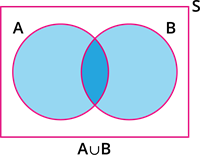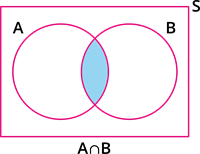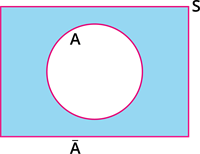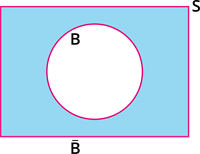PDF chapter test TRY NOW
Let A and B are the events of a random experiment.
Let S be the sample space where A \subseteq S and B \subseteq S.
Based on the occurrence of the events A and B, we shall discuss certain algebraic property.
- The event (A \cup B):
The events (A \cup B) occurs only when at least one of the events A or B occurs.
This event is depicted using the Venn diagram as follows:

- The event (A \cap B):
The events (A \cap B) occurs only when both the events A and B occurs.
This event is depicted using the Venn diagram as follows:

- The event \overline A:
The event \overline A occurs only when the event A does not occurs.
This event is depicted using the Venn diagram as follows:

- The event \overline B:
The event \overline B occurs only when the event B does not occurs.
This event is depicted using the Venn diagram as follows:

Important!
- P(A \cup \overline A) = S
- P(A \cap \overline A) = \phi
- \overline {A \cup B} = \overline A \cap \overline B represents the event when neither A nor B happens.
- If the events A and B are mutually exclusive, then P(A \cup B) = P(A) + P(B).
- P(\text{Union of events}) = \sum(\text{ Probability of events})
